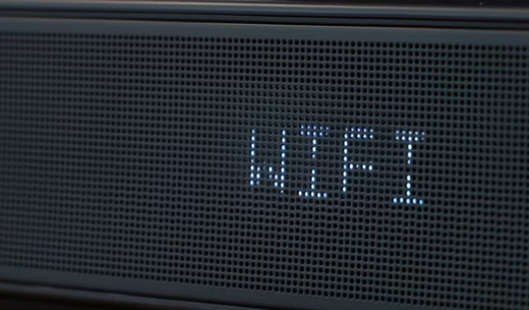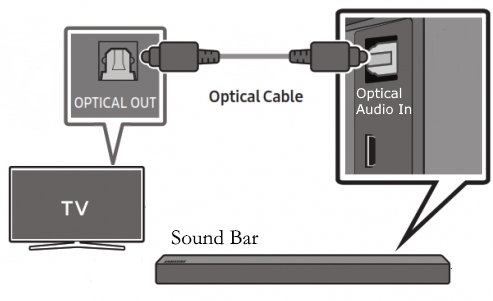
 |
SOUNDBARS
What is a soundbar? A soundbar is a powered electronic device with loudspeakers, audio amplifier, audio decoder, digital to analog converter and radio transmitters all built into a housing design to compliment a TV with the purpose of enhancing and enriching the sound experience for the listener. Soundbars occupy the middle ground between built-in TV speakers at the low end and a full function home theater surround sound system at the high end. Soundbars are somewhat limited in performance compared to a full surround sound system but the advantage is better sound than TV speakers without the time, installation effort and money required for a full function surround system. TV sets used to be deep, cube shaped boxes with room for a fairly good speaker but today TVs are flat and wide with less and less room for speakers as the TV displays get thinner. This means the flat screen's built-in TV speaker is not the best at producing quality audio. One solution to the less than stellar sound from TV speakers today is the soundbar. These wide, elongated speaker systems often match your TV style and lessen the wiring around your room for surround sound speakers.   Soundbars are available with all kinds of features and options. They can cost more than your TV. Soundbars often come with a remote control and many can be mounted on the wall. Most soundbars contain multiple speakers and some models come with a subwoofer, often wireless, for really boosting your audio enjoyment. A good sound bar will have a front panel display so you can see which input you are on and what the volume level is set to and other status indicators.  Don't expect a soundbar to give you the audio quality of a full surround setup (audio/video receiver plus six or more full-sized loudspeakers) because full surround systems have higher quality loudspeakers and better electronics and connections. The soundbar can produce what is known as Virtual Surround Sound which can be quite good but not as good as a full surround system. The benefit of a soundbar is that you get better sound than from the TV speakers without the more complex wiring and space requirements of a home theater setup. Similar to a real surround sound system, a soundbar can decode audio signals. However, soundbars distribute sound differently. A soundbar can have two to thirteen, sometimes even more small speakers. These speakers are commonly referred to as drivers. The drivers do not send discreet sound to different speakers as does a real surround sound system. Instead, the soundbar takes the surround sound signal, and then splits the signal between its built-in drivers. Speaker designations: • 5.1 indicates 5 speakers and one subwoofer speaker for bass. This is Dolby Digital 5.1 (left front, right front, center, left rear, right rear) Then there are 6.1 and 7.1 for additional surround sound speakers. • 5.2 would indicate 5 speakers and two subwoofers. With the Dolby ATMOS setup, a third place is added to indicate ceiling speakers. • 5.1.2 indicates 5 speakers and one subwoofer plus 2 ceiling speakers. Many soundbars only have 2 speakers or 2.0 while some add a subwoofer 2.1. Some soundbars have three speakers or 3.0 and a subwoofer would be 3.1. Passive and Active Soundbars A passive soundbar has the same function as a set of speakers. Like passive speakers, a passive soundbar does not have an external power source. Therefore, it requires a powered signal in order to drive the speakers. Thus, if you do have a passive soundbar, you will need an amplifier or receiver to power it. Most Soundbars Don’t Need an Amplifier or Receiver. Most soundbars available today are active. This means they have their own power to amplify. Look for the power cord input and the power brick for wall outlet connection. Soundbar Connections HDMI: Soundbars have one or more HDMI inputs and usually include an HDMI output to the TV, allowing you to use the soundbar to switch between video source components. Many HDMI connections now support audio return channels—either ARC or eARC. eARC has more bandwidth for higher-resolution and immersive audio formats. This allows a single connection from the soundbar to the TV if your source component, such as a cable box, is connected directly to the TV. If you intend to connect a Blu-ray player or an ultra-high definition (UHD) Blu-ray player with 4K HDR video capability, make sure the soundbar has a pass-through feature to send these signals to your high-definition TV. Bluetooth: Some soundbars support Bluetooth, which allows you to send music from mobile devices (tablets, phones) wirelessly to the soundbar speaker. Some support near field communication (NFC), which is a quick way to make an initial Bluetooth connection. Some have two-way Bluetooth, which will let you send music from the soundbar to Bluetooth-enabled speakers or headphones. WiFi: Models with built-in WiFi let you access online music services directly from the soundbar. Some models may include an Ethernet jack for a wired connection to your home network. Ethernet: This connection gives you a hard-wired internet connection in case Wi-Fi is not available. Audio inputs: Most soundbars now receive digital audio signals over an HDMI cable. Some models will include optical or coaxial digital audio inputs, as well as analog stereo RCA (red and white) or minijack inputs, for connecting older cable boxes, TVs, disc players, portable music players, and other devices. Streaming: Some soundbars offer access to streaming movies or TV shows from services such as Netflix; internet radio stations and social networking sites. RCA audio (stereo):white and red, left and right RCA cables for audio from the TV RCA outputs. 3.5mm stereo audio from TV AUX output or even the headphones out. Connect with a 3.5mm male to male audio cable.  The soundbar you choose should have all the inputs you may want to use, including HDMI (input and output), Optical In, analog stereo RCA In, Coaxial digital audio In, 3.5mm Aux In, USB, Ethernet and ideally, multiple inputs for each. You can also use a switcher with multiple Inputs and one Output to connect to soundbar.  Soundbar Inputs: HDMI Out has ARC/eARC When choosing a sound bar you really have a wide range of choices.  Diagram - Soundbar connections Surround sound from DVD player or satellite/cable TV receiver can be sent to the soundbar over digital audio cable while video is sent to TV over HDMI  Diagram - Soundbar connections HDMI If soundbar has HDMI inputs and HDMI audio return channel, audio is processed by the soundbar while sending video on to TV. TV can send audio to soundbar. Be sure soundbar can process the video resolution your TV needs.  TV sends audio to soundbar over optical audio OUT for better sound. Wireless sound  Many soundbars have wireless AirPlay capability so you can play music from your mobile phone through your home network router to a Wi-Fi capable soundbar. Bluetooth Wireless Bluetooth audio from TV to soundbar or mobile phone to soundbar is short range stereo only. What features and options should you consider on a soundbar? Wireless Subwoofer Remote Control Wi-Fi capability Bluetooth receiver App enabled control on your mobile phone Dolby Atmos capable HDMI ARC/eARC output to TV Optical Audio Input Wall mounting of soundbar Ethernet connection LED status display on front Apple Airplay HDMI Inputs (at least 1) Voice control Soundbars FAQ Q: I have a TV without any sound output ports. How do I connect a soundbar? A: Some people may have an older TV from decades ago which has no sound out option. These TVs would have to use a TV converter box (the old analog TVs would have to use this converter box anyway to get current broadcast TV signals). The digital to analog TV converter box has RCA stereo outputs which can connect to the soundbar. For cable or satellite TV, use the receiver box audio outputs to connect to soundbar. For a VCR or DVD, use the RCA audio outputs of the VCR or DVD player to connect. The TV would only have a video connection. If the TV only has an RF (coaxial cable) input (antenna), use an RF Modulator. Q: Can I use my TV as a switch? So hookup everything to the TV; PS3, cable box, Blu-ray player and run an optical audio cable from TV audio output to the soundbar input? A: Yes, but only if your TV supports this. Some TVs may only allow the built-in tuner audio to be sent out and not other HDMI inputs. Q: I have a soundbar with HDMI input. If I connect a Bluray player with built-in decoding using HDMI to the soundbar, will I get surround sound? A: Soundbar systems do not have the left surround or right surround speakers located around the listener. So although they come close, by definition a soundbar setup cannot provide the 6 channel effect even if provided the input. At best you could get 4 of the typical 6 surround sound audio streams available. Q: Can I connect an older TV to a soundbar? A: Any older TV with a headphone jack or RCA stereo audio output can be connected to a soundbar with 3.5mm or RCA stereo inputs. If the soundbar only has optical input, get a small analog to digital converter which will output optical. Q: Should I connect my source devices to my TV or my soundbar? A: It would depend on what capabilities your TV and soundbar have available to handle video and audio. Connecting devices to the TV would require the TV to be able to passthrough audio to the soundbar over HDMI ARC/eARC. Some TVs will passthrough LPCM and Dolby Digital but not Dolby Digital Plus or Dolby TrueHD. For Dolby TrueHD say from a Blu-ray player, the TV needs to have HDMI eARC. The soundbar would also need to have Dolby TrueHD decoding. Some TVs will passthrough Dolby Digital Plus and Dolby ATMOS. If the TV cannot passthrough the audio codec you want, then connect the source devices to the soundbar. The only possible disadvantage here is the soundbar must be able to passthrough the video resolution you need for the TV. Also the soundbar must be able to handle the audio codecs from the source devices. Audio codecs LPCM Dolby Digital Dolby Digital Plus Dolby TrueHD Dolby ATMOS is not a codec as it rides with Dolby Digital Plus and Dolby TrueHD • Turntable to PC hookup / record vinyl LPs to computer • PC to Stereo hookup - how to play computer thru sound system • Audio cassette to computer hookup - how to record audio cassettes to PC • See over 100 Hookup Diagrams Columbia ISA Audio Video Contact: columbiaisa@yahoo.com |